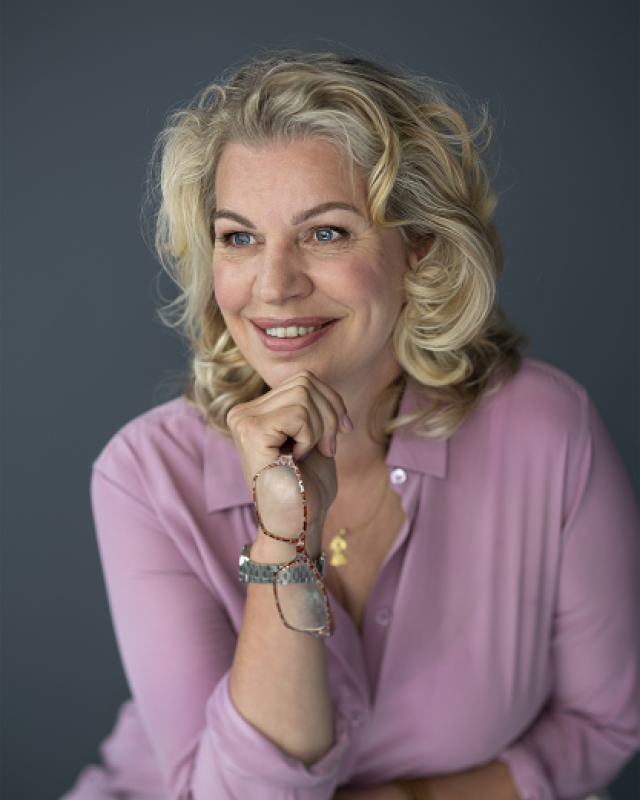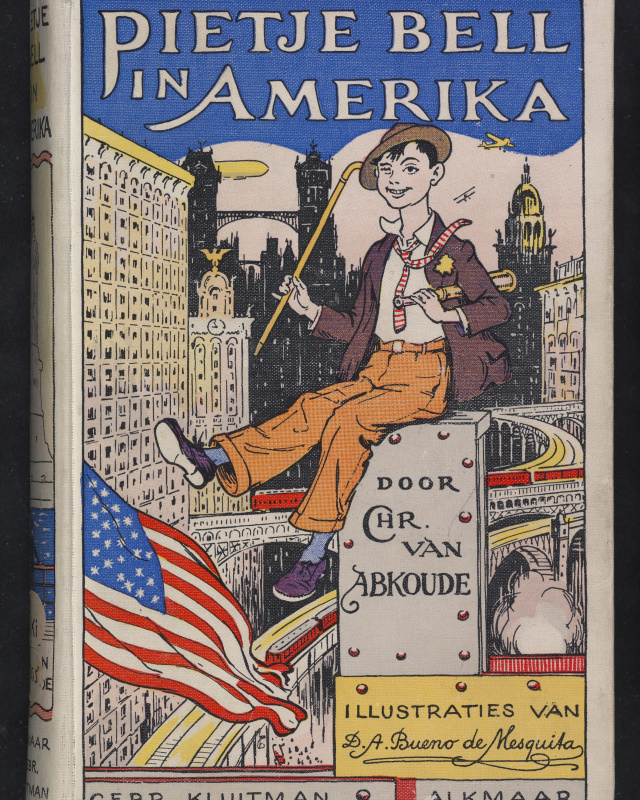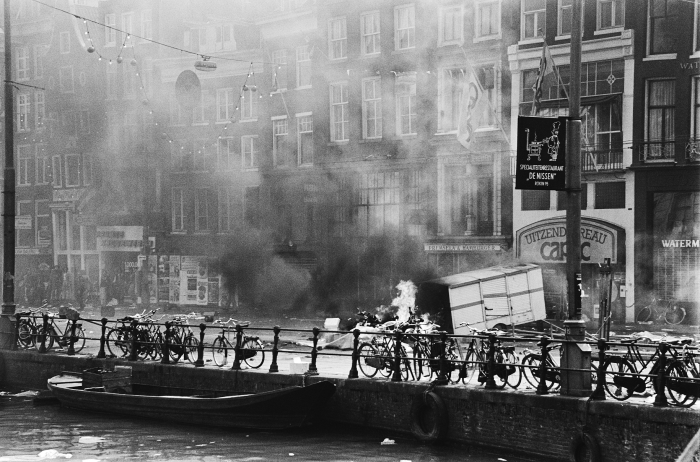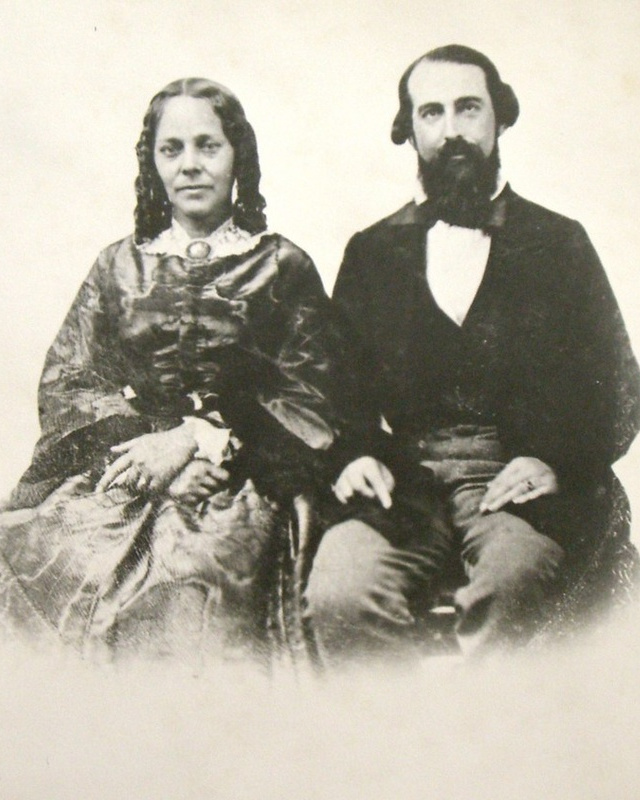The United States of America and the Netherlands are a rich source of inspiration to Dutch and American writers. The American journalist Russell Shorto found the origins of American tolerance in the histories of Amsterdam and New Amsterdam. Vice versa, Annejet van der Zijl, a Dutch author, found her muse in the United States, as she relates below.
When asked who or what the literary love of my life is, I would answer without any hesitation: America! There is no country more welcoming to a historian engaging in research than the United States, there is no place more exciting for a writer to be published, and there is no land more inspiring to the woman behind the historian/writer—me!—than that huge evocative country on the other side of the Ocean.
My love for America started at an early age, when I pinched a book from my older brother: “Pietje Bell in Amerika.” I still remember the cover: a jolly Dutch newspaper boy with the skyline of New York City in the background. It pointed to the idea the book conveyed: the land of limitless opportunities, from paperboy to billionaire, a new start, pulling yourself up by your bootstraps. To a shy and withdrawn teenage girl, stuck in a bleak provincial town in the north of the Netherlands, with a lot of rain and not much action, that image was utterly irresistible. This was the stuff that dreams were made of. J.R.R. Tolkien posited that everything you read and every experience you have in your mind turns into a layer of fertile soil, from which new notions may arise. It was no coincidence then that the very first flight I ever made, straight after graduating from high school, was to the city of skyscrapers. During that trip I decided to follow in Pietje’s footsteps and become a journalist. After a few years at university I succeeded in landing my much-desired job as a reporter, not in New York but at the editorial offices of a weekly magazine in Amsterdam. But even during my days as a journalist, America remained my shining city on a hill.
Journalist
I had the good fortune to be among colleagues who strove to emulate American New Journalism: a style of journalism from the 1960s and 70s made great by Hunter S. Thompson and Truman Capote. The office abounded with copies of American magazines, such as Vogue, Playboy, and especially Vanity Fair, a monthly magazine that excelled in long, deeply researched and beautifully written portraits and historical reconstructions. After a few months I wrote a large story inspired by such examples. Using archival research and interviews, I aimed to figure out what had actually happened during the Amsterdam coronation riots on 30 April 1980, the day of Queen Beatrix’s accession to the Dutch throne. “Truth is the daughter of time” became my motto.
In hindsight I was already moving from journalism to writing history and it is a small miracle that I worked for a weekly magazine for such a long time. Perhaps it helped that I was engaged to be married to one of the editors. His twin brother was a lawyer in New York and that meant that I could easily visit the U.S. while continuing to write articles. But I actually felt much more at home among the archival boxes and friendly archivists at the National Archives in The Hague than among the hectic hunters of daily news. It was only a matter of time before I would leave my job as a journalist. When in 2010 I received my PhD in history at the University of Amsterdam on a dissertation on the German years of prince consort Bernhard, Queen Beatrix’s father, I officially became the historian that I had always been.
Historian
My transition to writing books came with a big drawback: America drifted beyond the horizon. The engagement had been broken off and travelling to the U.S. was too expensive for a beginning writer struggling to make book deadlines and dependent on savings and a few subsidies. It didn’t stop me from reading the International Herald Tribune and imbibe the best essays and historical nonfiction that America had to offer: the publications of writers like Joan Didion and Laura Hillenbrand, for instance. And I kept on dreaming. The power to imagine a better future, to remain optimistic no matter what, is the essence of the American spirit. To me, it is what makes the country so fascinating and enticing.
The siren that lured me back to America was Allene Tew, previously completely unknown to me. Born in 1872, this so-called ‘American aunt’ of Prince Bernhard played a significant role during his engagement with crown princess Juliana, which is why she was subsequently chosen as one of the godmothers of Princess Beatrix. Following a suggestion of one of Bernhard’s cousins, I went to the villa on the Cote d’ Azur where Allene died in 1955, in search of letters by Bernhard. No letters were extant, but I did find the subject for my next book. At the time, I knew little about Allene, except for her American background and the fact that she had had no less than five husbands, including a German prince and a Russian count. Those few details displayed a strong optimism and an enterprising spirit: something typically American that drew me to her as the subject of a biography. And it was a good decision as researching her turned out to be an exciting adventure.
For months I traced her footsteps, from a crumbling industrial city in the hills near Chautauqua Lake in western New York State, where she grew up, via Pittsburgh and New York’s Upper East Side, where she lived with her first and second husband, to Long Island and the glamorous summer resort of Newport where she and her Russian count (husband #5) entertained lavishly. In every place I visited local historians were extremely helpful. That is a feature of the United States as well: open to newcomers and interested in history, perhaps because it is a young country. The life of Allene Tew allowed me to get in touch with many historical developments and events that until then had been distant abstractions to me: the Industrial Revolution, the Gilded Age, the First World War, and the Great Depression. Allene’s life exemplifies the country that spawned her. It was the rags-to-riches story of a liveryman’s daughter who rises to become one of the richest women of America and who even after devastating setbacks finds the strength to get up and keep going. The motto iterated over and over again in the letters she wrote on her small typewriter at an advanced age was: “Courage all the time!” It’s all-American!
Bestsellers
In line with the ideology of Allene’s country of birth—courage and perseverance will prevail—An American Princess became a bestseller. And not just in the Netherlands, but also, to my surprise, in the United States. It was scouted by Amazon Publishing, the publishing unit of the eponymous concern. The blown-up cover of my book was the centerpiece of a launch party on Times Square in New York. Move over, Pietje Bell! And then I incredulously watched as my name appeared in the list of Wall Street Journal Best-Sellers. I may not have become a millionaire, but this was beyond the wildest dreams of that teenage girl from a provincial town long ago.
For a brief moment I thought I was Snoopy, the world-famous writer. All this just could not be true! Within a short time, over a hundred thousand copies of my book had been sold, the internet burst with enthusiastic remarks from readers, and the publisher decided to publish another one of my books in translation as well. Sonny Boy, in translation retitled The Boy between Worlds, also became a bestseller. I was as proud as a peacock and was particularly pleased when my Charleston-born translator, somewhat bemused, remarked that my Dutch was remarkably easy to translate into English. It must have been the result of a decades-long focus on American journalism and literature.
My American fame gave me the courage to try my hand at the reconstruction of the exceptional love story of the Dutch fortune-seeker Leon Herkenrath (1800-1861) and Juliette Magnan (ca, 1809-1856), a black girl born in slavery in Charleston, South Carolina. The result was Leon & Juliette, published as the annual freebie in the Dutch week devoted to books and reading. My American editor was wildly enthusiastic and invited me to Seattle for a breakfast meeting to discuss the follow-up. In high spirits I started to work on Fortune’s Children, an extension of the story of Leon and Juliette, and the first book I specifically wrote for the American market. As well as the last, because then my promising career as a writer of bestsellers came to a screeching halt.
Unexpected events
One of the favorite themes in my books is how the lives of my protagonists are deeply impacted by world events on which they have no control whatsoever. And now it happened to me. In May 2020, when I had just submitted my manuscript, George Floyd fell victim to police violence in Minneapolis. The Black Lives Matter movement arose and the public mood quickly changed. Amazon replaced my editor and her successor was not enthusiastic about my project. She consulted an anonymous cultural research editor who asked for changes to be made to my book. Could I turn my female protagonist into a completely different kind of person? Could I make explicit that true love between whites and blacks under a system of slavery was an impossibility? And, while on the subject, was it not a bit presumptuous of me as a white woman to write about a black slave girl? After I repeatedly explained that as a historian I could not tamper with or change verifiable historical facts—nor the color of my skin—communications stalled. Then the whole project was cancelled.
This was a sober awakening from my American dream, having run out of my fifteen minutes of fame. Briefly you’re the toast of the town, feted with oysters and champagne, and next, you’re yesterday’s news and your emails are not considered worthy of a reply anymore. Fortunately I could still rely on my own country. In the Netherlands Fortuna’s kinderen became a bestseller. The book received widespread plaudits and approval, including from the black community.
One might expect this experience to finally cure me of my fascination for all things American. But that is not how Great Loves work. I still read American newspapers every day and still keep a close eye on political developments in Washington. When I needed a break to reconsider what direction I had to take as a writer, I immediately booked a flight to friends on the other side of the ocean, fully confident that I would find the answer there. I returned refreshed, full of optimism and reinvigorated by America’s plentiful natural and cultural splendors. And with a much clearer idea as to what my priorities really are.
Something else was in my bags too when I returned to Amsterdam’s Schiphol Airport: a dose of the optimism that fuels the American can-do attitude. I decided to reach out to my publisher in Seattle. Who knows, another editor may be in place and perhaps publishing the book I wrote is now feasible. A new beginning—very American!—might be on the cards. No reply has been forthcoming as yet, but I will try again in six months or so. There is a single country on earth where giving it a second or third try is possible, it is the United States. As Allene Tew said: “Courage all the time!”
About the author
Annejet van der Zijl (PhD Amsterdam, 2010) is one of the best-known writers of literary nonfiction in the Netherlands. She has won numerous prizes for her work. Her bestsellers in English include The Boy Between Worlds and An American Princess.
About the blogseries
This is the seventeenth installment in a monthly series of blogs telling stories about the rich history shared by the American and the Dutch peoples. Authors from both countries present accounts of their own choosing, from a wide variety of perspectives, in order to give as full a picture as possible of the triumphs and heartbreaks, delights and disappointments that happened place over hundreds of years of shared history. Not all these stories are “feel-good history’, however. While the relations between the Dutch and the Americans have for the most part been stable and peaceful, their shared history contains darker moments as well. Acknowledging that errors have been made in the past does not diminish this friendship but, rather, deepens it.
Further Reading
- Zijl, Annejet van der, Bernhard. Een verborgen geschiedenis (Amsterdam: Querido, 2010).
- Zijl, Annejet van der, An American Princess: The Many Lives of Allene Tew (Seattle: AmazonCrossing, 2018).
- Zijl, Annejet van der, A Boy Between Worlds: A Biography (Seattle: AmazonCrossing, 2019).
- Zijl, Annejet van der, Fortuna’s kinderen. Een transatlantische familiekroniek (Amsterdam: Hollands Diep, 2021).
Illustrations
- Author Annejet van der Zijl. Photo: Anja van Wijgerden. https://www.hollandsdiep.nl/auteur/12/annejet-van-der-zijl.html
- Cover of the first edition of Pietje Bell in Amerika, 1929. Chr. van Abkoude, Pietje Bell in Amerika (Alkmaar: Kluitman, 1929). Koninklijke Bibliotheek, Den Haag, sign. KW Ki 8055. © Uitgeverij Kluitman.
- Coronation riots, 30 April 1980. Photo: Hans van Dijk/Anefo. National Archives of the Netherlands, collection 2.24.01.05, inv. nr. 930-8091. https://www.nationaalarchief.nl/onderzoeken/fotocollectie/acdfabf6-d0b4-102d-bcf8-003048976d84?searchKey=3e757d9b7d698f9b0b4f9166fbf0d151
- The baptism of Princess Beatrix, 12 May 1938. Allene Tew is at the far left. Photo: Franz Ziegler. Fotocollectie RVD / Koninklijk Huis. National Archives of the Netherlands, collection 2.24.26, inv. nr. 012-0030. https://www.nationaalarchief.nl/onderzoeken/fotocollectie/afb2db14-d0b4-102d-bcf8-003048976d84?searchKey=064b095e965c751b83f2788b96232393
- Virginie Herckenrath, daughter of Leon Herckenrath and Juliette Magnan. Virginie married James de Fremery and the pair moved to San Francisco. Copyright unknown.






